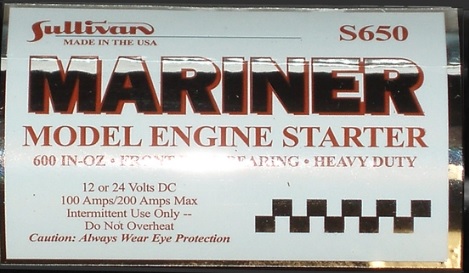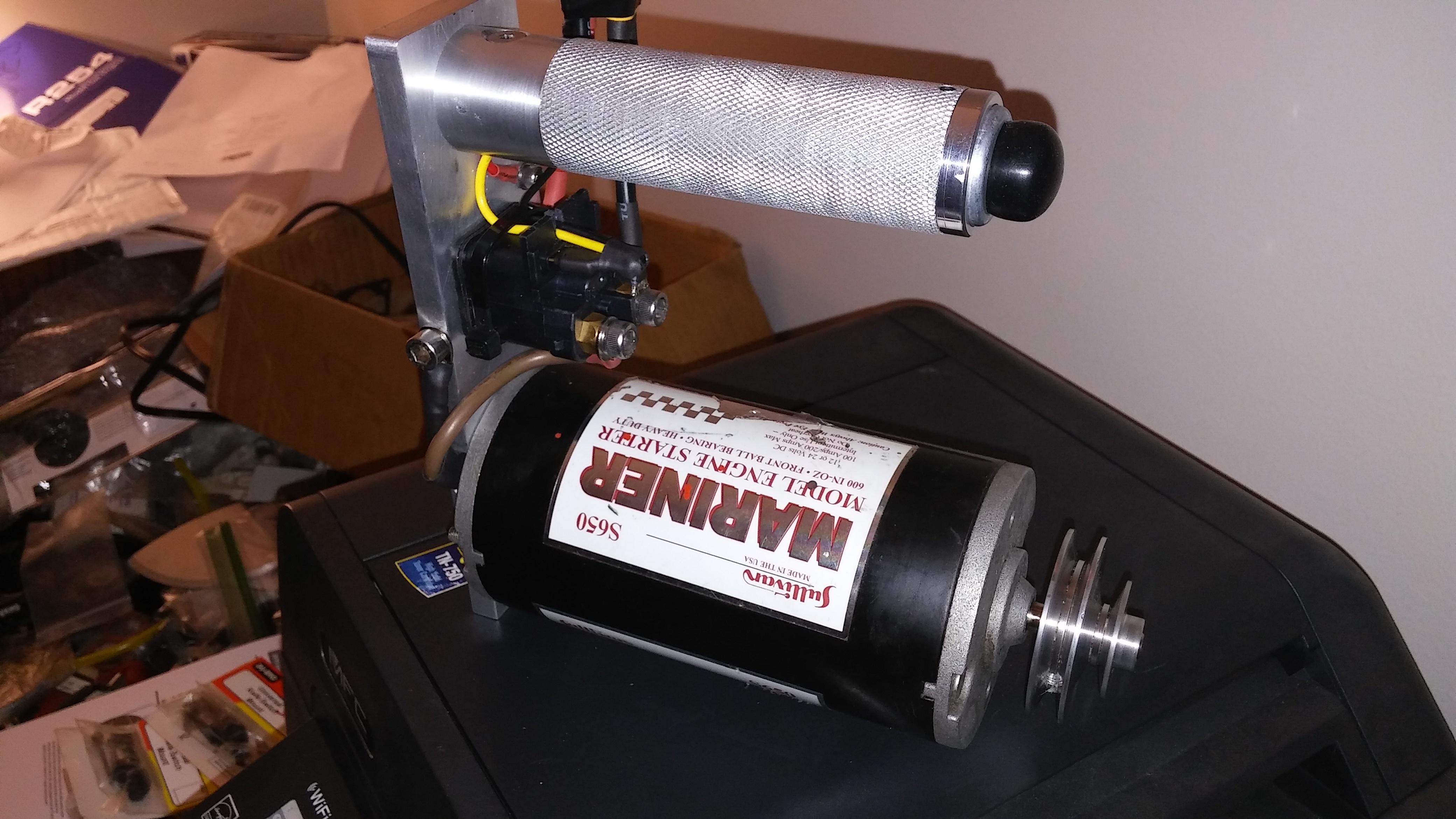Tim,
It looks the same. I think the price difference is the rubber cover that it comes with.
Daniel
You are wrong. I = V/R Ohms law. I is current, V is voltage, and R is ohms. If the voltage number goes up and all other values stay the same. Current will reduce.
Mike
You are mistaken sir.
These starter motors we are talking about on 12 volt draw EXACTLY half of what they do on 24 volt. The amperage goes up when voltage goes up.
Same with say a servo. It will draw more with the LiPo 7.4 volt than it will on 6.6 volt LiFe. The load is the same and increase the voltage and current goes up.
If you send more voltage to a DC motor and do not change nothing about the motor it will draw MORE amperage.
You are mistaking a A/C motor where you are taking the windings that are wired in parallel for low voltage and taking them apart and putting the same windings in series for the high voltage then and only then it will draw 1/2 if it went from 120 low to 240 volt high.
Ok now don't change the windings to high voltage series loop on that motor and leave it wired parallel for 120 and connect it to 240 and see what kind of amps it draws. Be ready for a surprise when it draws many times what it did on 120. Of course the same breaker would not even hold it long enough to burn it up properly. Lol.
Increase voltage with same resistance load and amperage increases.
You can't change the wiring on winding of the starter motor. So again increase voltage you increase the amperage. The extra rpm and torque is never free. It comes from the increase in voltage that in turn is also increasing the amperage draw.
And also with A/C motor is can draw less with a higher voltage within the range of acceptable voltages like when a 230 volt motor is run on 208 versus on 240 volt. 240 volt will usually draw less current. But that is because it was designed for 230 volt. If it was designed for 208 and you ran it on 240 current would go up too.
Been working with a/c and d/c circuits for 40 years as a licensed electrician.
Maybe a spec from DC starter motor will help you revisit your thoughts about this.
12 volt draw is 100 amp
24 volt draw is 200 amp
This is a copy and paste,
In a basic DC circuit with a given resistance for the load, if the voltage drops, so does the current. This is what Ohm’s Law says:
V = IR,
where
V is voltage in Volts
I is current in Amperes (Amps)
and
R is resistance in Ohms.
This relationship can be written in two other forms, each isolating one of the 3 variables:
V / R = I,
and
V / I = R.
As an exercise, try using the second of these (V / R = I) with any arbitrary value of V and R to obtain a current I.
Next, using the same value for R, try a lower value for V. You’ll see that I is smaller as well.
In order for current to increase when voltage drops, the circuit resistance R must decrease by more than the voltage.
Correct Mike... I can basically reduce by half all of my switchgear breaker amps and wiring sizes on equipment that runs 440 vac versus 220 vac..
much easier on contactors and the amount of heat built up into my panels etc...
Sounds like a good idea except you must realize if you go 440 volt you need all 600 volt equipment. 600 volt equipment is 4 times as much money and twice the size. Then for any low voltage you need in the 120/240 volt range you would need to step your 440 back down on your dime paying for the transformers and switch gear to do that. The power company usually will only supply one type voltage in. All motors would need to have 600 volt starters and disconnects.





